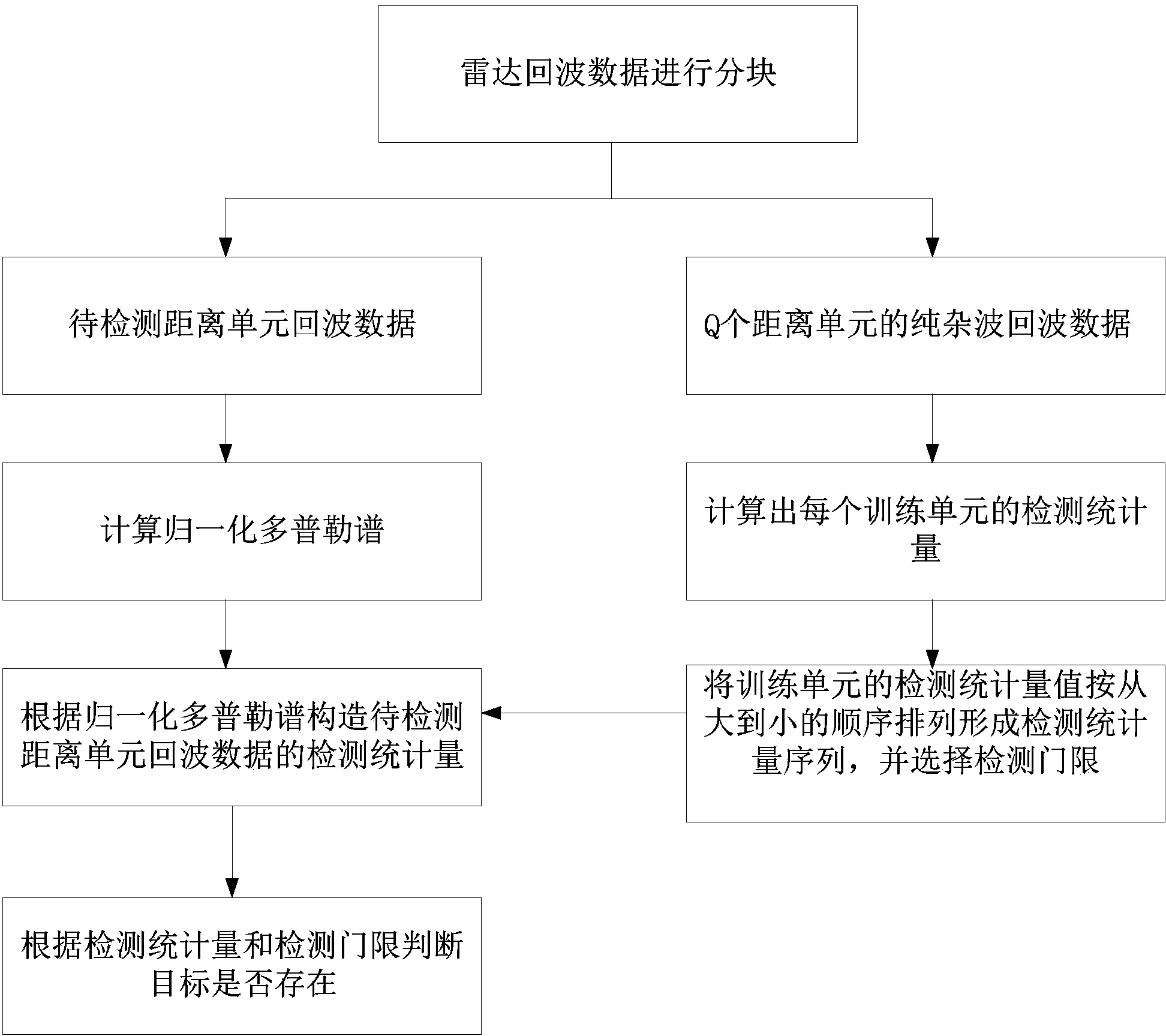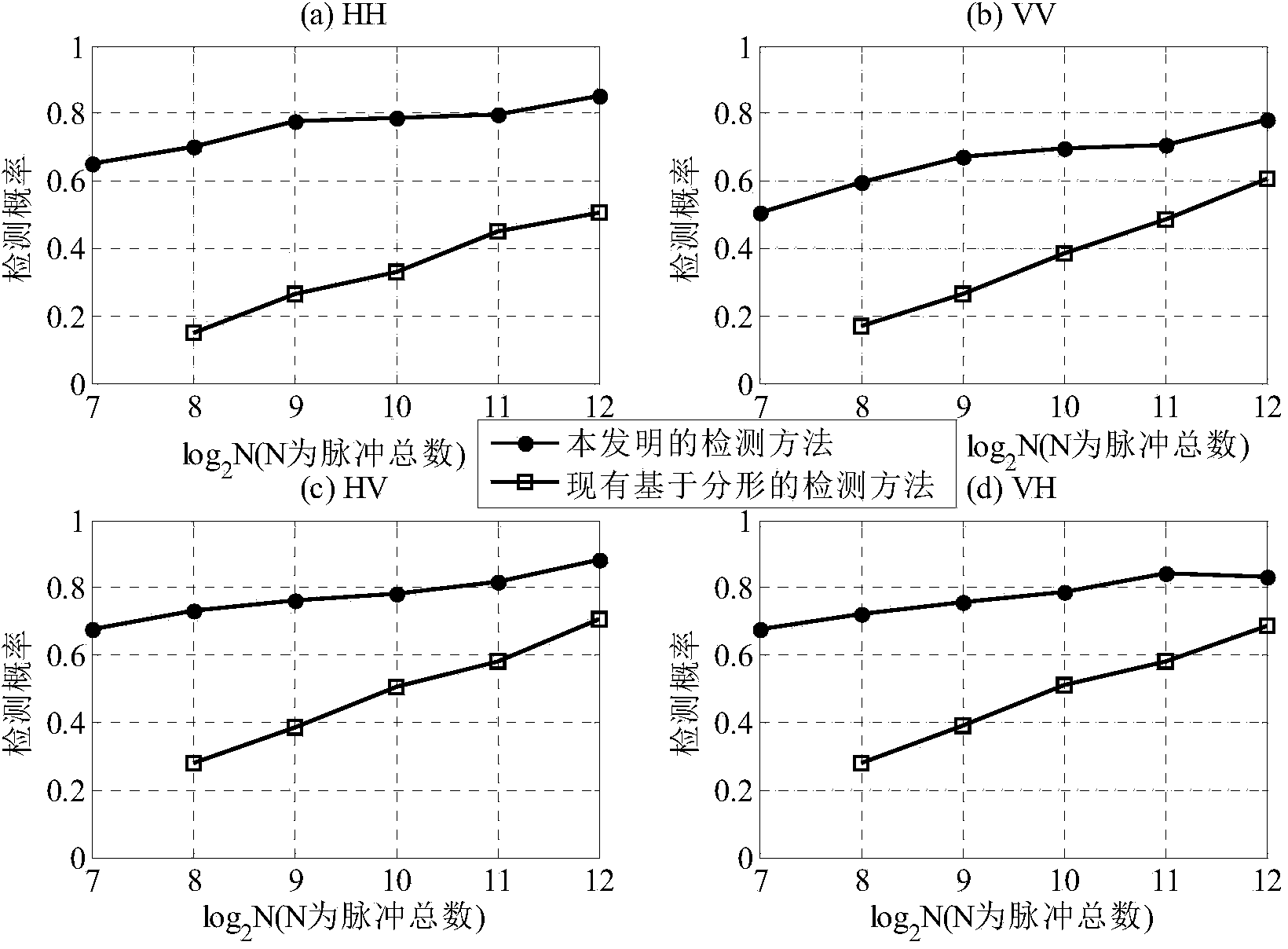Method for detecting floating targets on sea based on normalized Doppler spectrum
A technology of Doppler spectrum and target detection, which is applied in the direction of measuring devices, radio wave measurement systems, radio wave reflection/reradiation, etc. It is difficult to apply the detection method that can solve the fractal characteristics, and the radar cannot perform long-term detection Observation and other issues
- Summary
- Abstract
- Description
- Claims
- Application Information
AI Technical Summary
Problems solved by technology
Method used
Image
Examples
Embodiment Construction
[0040] refer to figure 1 , illustrate a kind of sea surface floating object detection method based on normalized Doppler spectrum of the present invention, concrete implementation steps are as follows:
[0041] Step 1. The radar transmitter transmits continuous pulse signals, and the radar receiver receives multi-pulse target signals. After matching and filtering the multi-pulse target signals, the radar echo data X along the distance dimension and pulse dimension are obtained continuously. For the radar The echo data X is divided into blocks, that is, divided into B blocks along the pulse dimension, and the echo data of block B (X 1 ,...,X b ,...,X B ), b=1,2,...,B.
[0042] Radar echo data X is expressed as a M×L two-dimensional matrix, M means that it contains M distance units, L means it contains L pulses, and the radar echo data X is evenly divided into blocks B according to the number of pulses L, and B is greater than 1 It is an integer smaller than L, and the speci...
PUM
 Login to View More
Login to View More Abstract
Description
Claims
Application Information
 Login to View More
Login to View More - R&D
- Intellectual Property
- Life Sciences
- Materials
- Tech Scout
- Unparalleled Data Quality
- Higher Quality Content
- 60% Fewer Hallucinations
Browse by: Latest US Patents, China's latest patents, Technical Efficacy Thesaurus, Application Domain, Technology Topic, Popular Technical Reports.
© 2025 PatSnap. All rights reserved.Legal|Privacy policy|Modern Slavery Act Transparency Statement|Sitemap|About US| Contact US: help@patsnap.com



